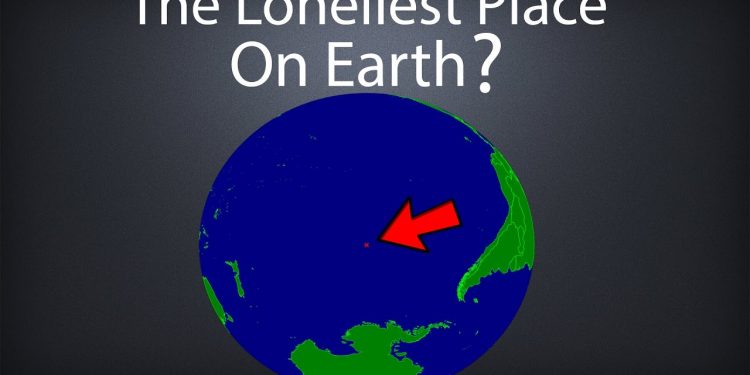Want to experience how the loneliest place on the Earth feels like? All we can vouch for is the fact that you get all your space and privacy there. Jokes apart! A one-way ticket aboard Air New Zealand Flight 30 will leave a hole of about $750 in your pocket. It’s an overnight flight leaving Auckland, New Zealand in the evening and arriving in Buenos Aires, Argentina in the late afternoon, but of the same day that you left.
You don’t realise you’ve flown for over 11 hours, but you still arrive four hours before you took-off. Magic? No thanks to the International Date Line.
11 hours. Phew!! That’s a long flight. All told, you’ll cover 6,564 miles, 10,564 kilometers, and 10 time zones. You’d better bring a good book and download a movie or two, because looking out the window won’t provide much in the way of sightseeing: the journey is almost entirely across endless acres of the nothingness of Pacific Ocean.
But halfway through that nothingness, you’ll cross over the most isolated spot on the face of Earth.
As you fly through the air at 39,000 feet over the far southern Pacific, you’ll cross over Point Nemo: the most isolated place on Earth.
ABSOLUTE NOTHINGNESS
There’s nothing to see at Point Nemo—which is entirely the point. Surrounding this pinpoint of GPS coordinates is 9 million square miles of ocean, and nothing else. It is the absolute furthest point from any land you can possibly be on this plane.
It’s difficult to convey in words just how isolated Point Nemo—also known as the “oceanic pole of inaccessibility”—really is. It sits at the center of a space so vast, our minds fail to grasp the magnitude of it all.
That might be what makes it such an appealing location for fictional work: author H.P. Lovecraft used it as the earthly home of the monster Cthulhu, while the narrative-heavy band Gorillaz cite Point Nemo as their former home and studio location.
The maps we grow up with (understandably) place more emphasis on land masses than our sizeable oceans. But the mighty Pacific takes up nearly an entire half of the globe, with very little in between the Americas and east Asia.
That’s doubly true for the expanse between Oceania and South America, where islands are scarce, and even the ones that are there aren’t exactly tropical oases.
The far South Pacific is generally an inhospitable place—if you happened to find yourself floating around Point Nemo, you likely won’t feel like staying very long. Water temperatures average around 45 degrees Fahrenheit. The ocean floor is a full 13,000 feet below the surface—2.5 miles straight down.
The nearest land is a great deal further—1,670 miles, to be exact. Even then, your choices aren’t inviting. To the North you’ll find Ducie Island, a tiny, uninhabited atoll featuring just 0.27 square miles of land. To the South is Maher Island—another small and uninhabited island off the coast of Antarctica. Your best bet is to head Northeast, towards Easter Island—still one of the most isolated inhabited islands in the world. In fact if islands aren’t really your bag, you’ll have to travel nearly 2,100 miles just to reach the Chilean coast—or head back another 3,000 miles to New Zealand.
In fact, were you to find yourself bobbing in the waters of Point Nemo and desperate for a conversation, the closest human being to you would likely be the astronauts on the International Space Station, floating by just out of reach 249 miles above your head.
THE EERIEST PLACE IN THE OCEAN
Point Nemo isn’t just remote for humans—its location makes it fairly devoid of any animal life. Oceanographer Steven D’Hondt goes as far as to call it “t h e d e a d e s t s p o t i n t h e o c e a n .”The conditions in the center of the South Pacific Gyre make this sizeable portion of the globe hostile to biological life—essentially making it a massive oceanic desert.
So if you are having second thoughts about booking the ticket to the loneliest spot on Earth, you are not ALONE.
PNN/Agencies






































